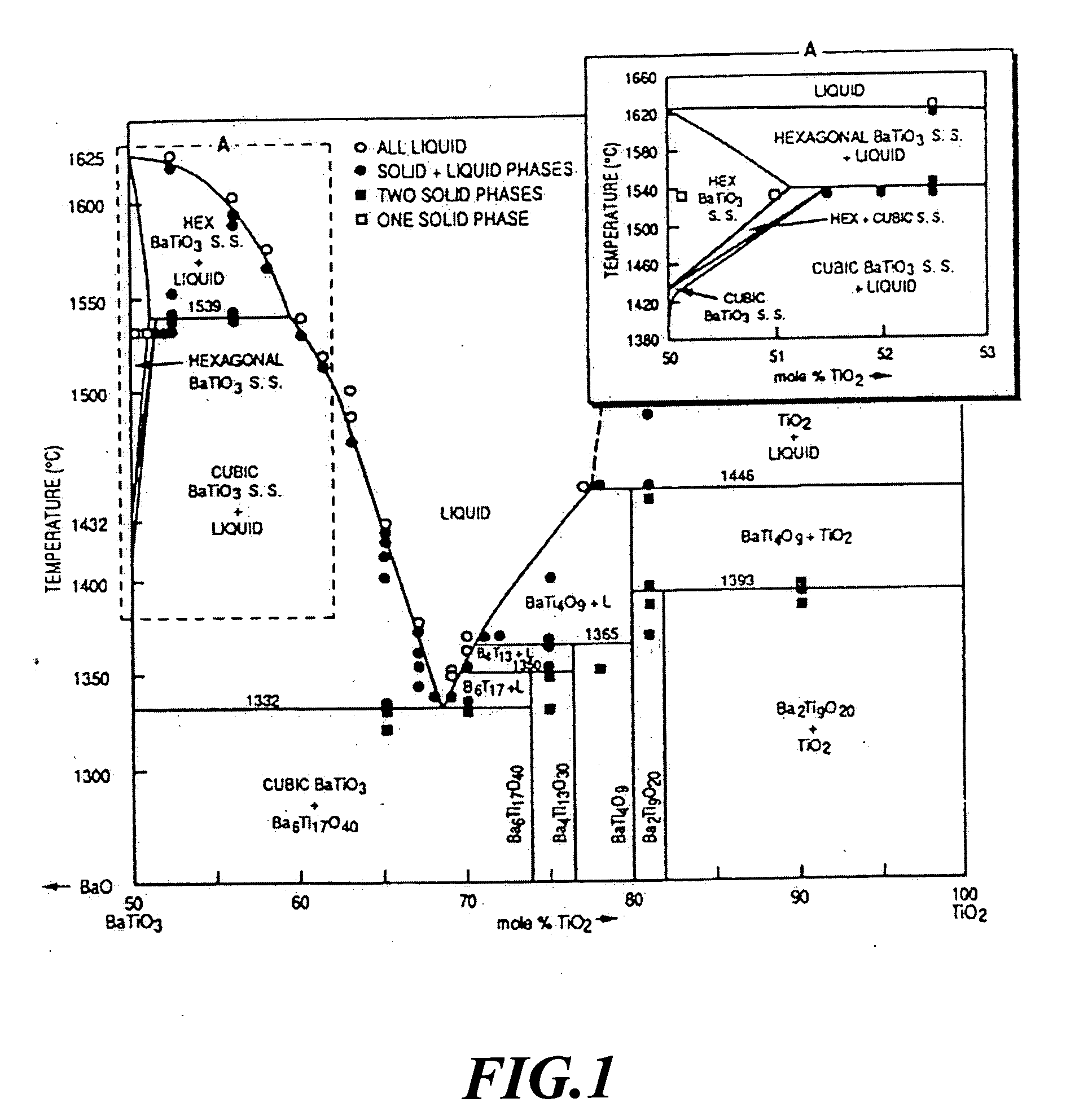Low-temperature sintered barium titanate microwave dielectric ceramic material
- Summary
- Abstract
- Description
- Claims
- Application Information
AI Technical Summary
Benefits of technology
Problems solved by technology
Method used
Image
Examples
Embodiment Construction
[0044] The present invention includes two components. One is the host matrix, which is synthesized to a great proportion of the Ba2Ti9O20 phase with the addition of 7.5wt% B2O3 and after calcination. The other component is the glass matrix. It is found that the Ba-B-Si-Li glass, Ba-B-Zn-Si-Li glass, Ba-B-Si-Li-Cu glass or Cu-B-Zn-Si-Li glass had a great influence on densification and dielectric properties of the Ba2Ti9O20 microwave dielectric ceramic material.
(I) Host Matrix
[0045] 1. Process for preparing Ba2Ti9O20 ceramic matrix:
[0046] In a PVC container, a starting powder containing BaCO3 and TiO2 at a molar ratio of 1:4.5 is placed, and then some zirconia balls are introduced and ball milled for 8 hrs. After mixed, the mixture is dried in an oven at 80° C. The dried powder is heated to 950° C. at a heating rate of 10° C. / min, and calcined at 950° C. for 20 hrs. After calcined, a proper amount of powder is taken to perform an XRD analysis. The remaindering powder, the zirconia...
PUM
| Property | Measurement | Unit |
|---|---|---|
| Temperature | aaaaa | aaaaa |
| Percent by mass | aaaaa | aaaaa |
| Percent by mass | aaaaa | aaaaa |
Abstract
Description
Claims
Application Information
 Login to View More
Login to View More - R&D
- Intellectual Property
- Life Sciences
- Materials
- Tech Scout
- Unparalleled Data Quality
- Higher Quality Content
- 60% Fewer Hallucinations
Browse by: Latest US Patents, China's latest patents, Technical Efficacy Thesaurus, Application Domain, Technology Topic, Popular Technical Reports.
© 2025 PatSnap. All rights reserved.Legal|Privacy policy|Modern Slavery Act Transparency Statement|Sitemap|About US| Contact US: help@patsnap.com



